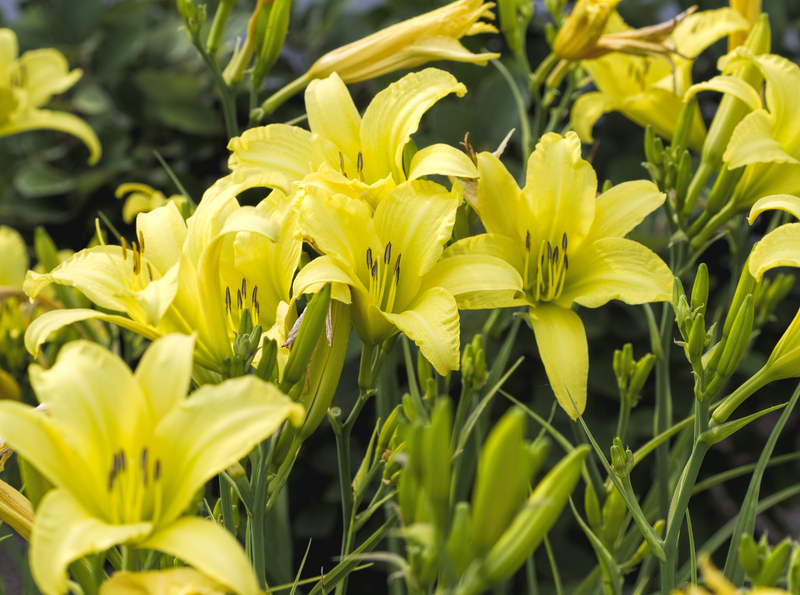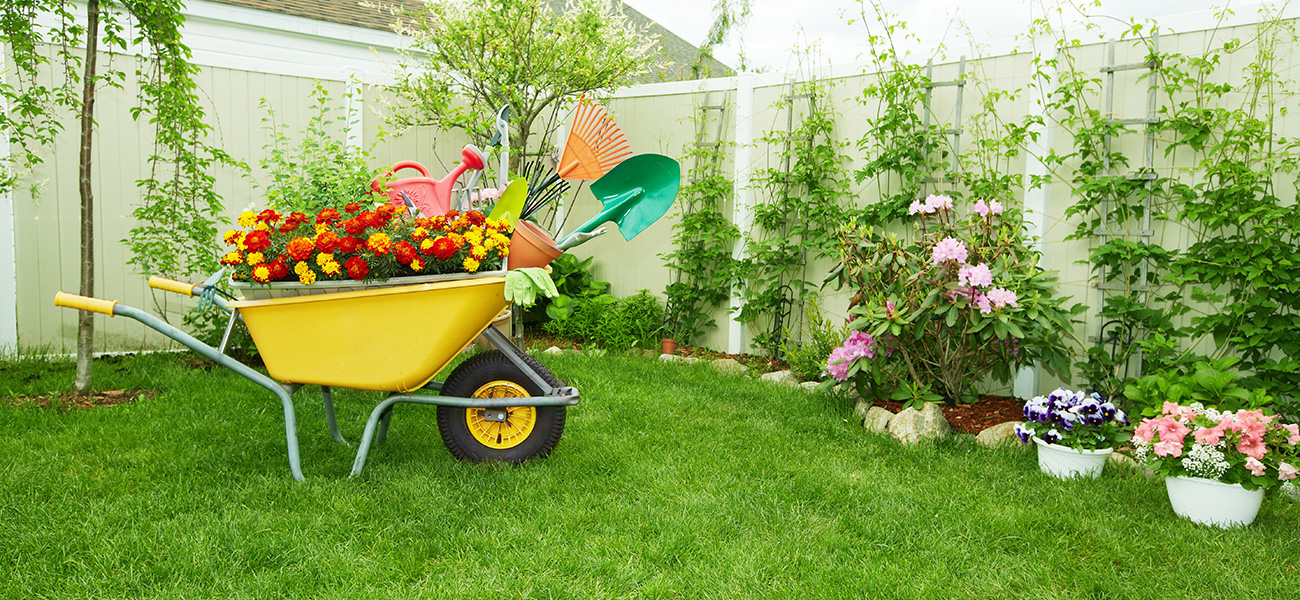Taming the Gusts: Managing Excessive Wind in Your Garden
Posted on 03/06/2025
Taming the Gusts: Managing Excessive Wind in Your Garden
Wild winds and wayward breezes can be a gardener's worst enemy. Learning to mitigate and manage wind damage is essential for thriving plants, especially in exposed locations. In this comprehensive guide, we'll explore practical solutions and creative strategies for managing excessive wind in your garden, helping you turn a blustery backyard into a lush, productive paradise.
Why Is Wind a Problem in the Garden?
Before we jump into wind management techniques, it's important to understand how wind impacts gardens:
- Physical Damage: High winds can break stems, uproot young plants, and shred leaves, often ruining vegetables or delicate flowering plants.
- Moisture Loss: Constant wind rapidly increases evaporation from soil and leaf surfaces, leading to drought stress, even when rainfall seems sufficient.
- Reduced Pollination: Blustery conditions can hinder pollinators like bees and butterflies from visiting flowers.
- Chilling Effects: In cool climates, strong wind lowers air temperature near the ground, increasing the risk of frost and chilling injury.
- Soil Erosion: Wind can strip topsoil, deplete nutrients, and damage root systems, leading to long-term loss of productivity.
Clearly, taming wind in the garden is not just about comfort, but about garden health and productivity.

Assessing Your Garden's Wind Risk
Every garden is unique, so your wind management plan needs to be customized. Start with an assessment:
- Direction: Identify the direction(s) of prevailing winds. Does the wind come predominantly from the north, south, east, or west?
- Intensity: Observe wind strength--do you frequently experience strong gusts, or is wind typically mild?
- Exposure: Are there structures, fences, hedges, or trees nearby that offer protection, or is your garden wide open?
- Seasonality: Are certain seasons windier than others?
Understanding Types of Windbreaks: The Basics
The most effective tactic for managing excessive wind in your garden is the use of windbreaks, also known as shelterbelts. Windbreaks are barriers--either living or structural--that slow winds, offering significant protection for plants and soil.
There are two main types:
- Living Windbreaks: Rows of trees, shrubs, or tall perennials that form natural barriers.
- Artificial Windbreaks: Physical structures such as fences, walls, or specially designed screens.
How Windbreaks Work
Windbreaks reduce wind speed on their leeward side (the side sheltered from the wind). The extent of protection depends on:
- Height of the barrier (the higher, the wider the sheltered zone)
- Density or porosity of the material (solid breaks create turbulence, semi-permeable screens diffuse wind more gently)
- Length and continuity of the barrier
For optimum garden wind management, consider a semi-permeable windbreak. Wind moving through a 50% porous barrier slows without creating strong eddies or wind tunnels--ideal for delicate gardens.
Living Windbreaks: Plant Power Against the Wind
Choosing Plants for Windbreaks
The best plants for windy gardens are hardy, deep-rooted, and resilient in your climate.
Popular options include:
- Evergreen Trees: Pine, juniper, Spruce, or holly provide year-round shelter.
- Thick Shrubs: Privet, viburnum, photinia, cotoneaster, and elderberry are densely branched options.
- Bamboo: Certain clumping varieties make fast-growing and attractive windbreaks.
- Tall Grasses: Miscanthus, pampas grass, or switchgrass can create fast, semi-seasonal screens for vegetable beds.
- Hedging Plants: Boxwood, laurel, beech, and hornbeam are reliable choices for formal or informal hedges.
Tip: Mix evergreens with deciduous plants for layered, multi-season coverage and visual appeal!
Designing and Planting Your Living Windbreak
- Location: Place windbreaks perpendicular to prevailing winds for maximum protection.
- Spacing: For rows of trees or shrubs, allow enough room for full natural growth--avoiding dense crowding, but ensuring a solid wall when mature.
- Rows: For extra-strong winds, plant two or three staggered rows of different heights (tallest at the back, shortest facing the wind).
- Edge Plantings: Use lower plants near the front and tallest at the back to "step up" the barrier and deflect wind upwards.
- Maintenance: Keep shrubs and hedges trimmed, promote bushy growth, and replace gaps quickly to avoid wind tunnels.
Planting a living windbreak not only tames the gusts but also provides habitats for birds and beneficial insects, enhances privacy, and boosts the aesthetics and biodiversity of your garden.
Artificial Windbreaks: Fences, Screens, and Structures
Material Matters
There are many artificial solutions for controlling wind in gardens:
- Slatted Fences or Panels: Semi-open designs, like louvered or trellis fences, break rather than block the wind, reducing turbulence.
- Windbreak Mesh or Netting: Available in rolls (typically 30-50% density), easy to install along posts, and very effective.
- Woven Willow or Bamboo Screens: Attractive, rustic options that diffuse the wind for smaller areas.
- Garden Walls: Bricks or solid panels halt the wind but may create wind vortexes. Best combined with dense planting in front.
- Temporary Windbreaks: Use hessian, shade cloth, or even plastic sheeting on stakes to protect seedlings or vegetable patches during particularly windy spells.
Tips for Effective Windbreak Installation
- Anchor posts securely to resist forceful winds. Use strong fixings and ensure posts are set deep into the ground.
- Stagger lengths or alternate heights: This prevents wind from forming "jets" at the edges.
- Combine hard structure with soft planting: Placing shrubs in front of a fence adds another layer of wind buffering.
Microclimates: Maximizing Sheltered Spots in the Garden
Even in an exposed area, you can create microclimates--small zones sheltered from excessive wind which favor sensitive or high-value plants. Some techniques include:
- South-facing Walls: Use the warm, sheltered lee of a wall for tender plants like tomatoes or peppers.
- Raised Beds and Coldframes: Raise planting areas to keep roots warm and protected from ground-level gusts.
- Cluster Planting: Group hardy varieties on the windward side to shelter delicate plants just beyond.
- Strategic Containers: Large planters can be moved to block wind and protect prized specimens.
Protecting Individual Plants from Strong Winds
Physical Supports & Garden Accessories
- Stakes and Ties: Secure tall or floppy plants with robust stakes and soft ties--ensure movement is possible to avoid stress.
- Cloches and Plant Covers: Use bell-shaped cloches, row covers, or horticultural fleece to shield seedlings during windy weather.
- Mulching: Apply a deep layer of organic mulch or stones around plant bases to weigh down soil, reducing erosion and moisture loss.
- Wind Pruning: Remove weak, damaged, or excessively high growth before the windy season to make plants compact and resilient.
Caring for Newly Planted Trees and Shrubs
- Plant new trees with their roots well buried and use tree stakes angled into the wind for extra security (remove ties after 2-3 years).
- Water new plantings deeply; wind may dry them faster than you expect.
Long-term Strategies for Windy Gardens
For gardeners facing chronic wind issues, the solution is not only immediate protection but also planning and planting for the future:
- Select wind-tolerant plants for key beds and borders. Native species or those adapted to coastal or mountainous regions are good bets.
- Layer planting for gradual wind reduction: Trees, shrubs, and underplanting work together to slow and redirect air.
- Monitor and adjust: Over time, as windbreaks grow and conditions change, reassess your setup and fill in any new gaps.
Best Plants for Windy Gardens
- Eucalyptus
- Escallonia
- Griselinia
- Sea buckthorn (Hippophae)
- Olearia (Daisy Bush)
- Tamarisk
- Buddleja (Butterfly Bush)
- New Zealand Flax (Phormium)
- Pyracantha (Firethorn)
Many ornamental grasses, hardy perennials, and native shrubs can also thrive in gusty conditions.

FAQs: Wind Management in the Garden
1. Does a solid fence work better than a hedge for wind?
No. Solid fences stop wind abruptly, which can create damaging turbulence and wind tunnels immediately beyond. A living hedge or semi-permeable fence is generally best for deflecting wind and protecting a larger area of your garden.
2. Can nets or screens be left up year-round?
Most commercial windbreak nets are UV-stabilized and weatherproof, but it's wise to check periodically for wear and replace as needed. Screens designed for temporary use (like hessian) may degrade or become unsightly over time.
3. Do raised beds help with wind protection?
Yes! Raised beds create defined spaces, minimizing soil erosion and making it easier to install short windbreaks or use cloches for vulnerable plants.
4. Will mulching really help?
Yes. Mulch not only conserves water--which is especially important in windy gardens--but it also helps anchor soil and can reduce damage from flying debris.
5. Is it worth planting trees in a very windy area?
Absolutely. Even slow-growing trees, when sited and maintained well, provide escalating wind protection, add habitat, improve soil, and anchor your garden over decades.
Conclusion: Cultivating Calm in Exposed Gardens
Gale-force winds don't have to spell disaster for your garden. With smart planning and proactive strategies, you can tame even the wildest gusts. By combining living and artificial windbreaks, protecting individual plants, and adapting your design over time, your garden can flourish--lush, productive, and beautiful--even in the face of blustery weather.
Remember: The key to managing excessive wind in your garden is persistence, good plant choices, and adapting as your landscape evolves. Tame the wind, and grow your garden dreams--with confidence!



